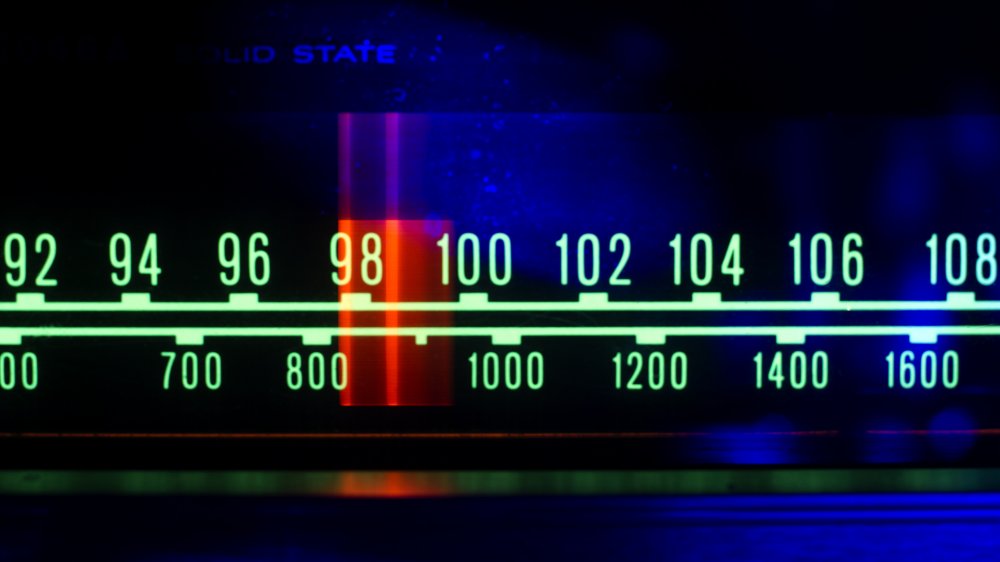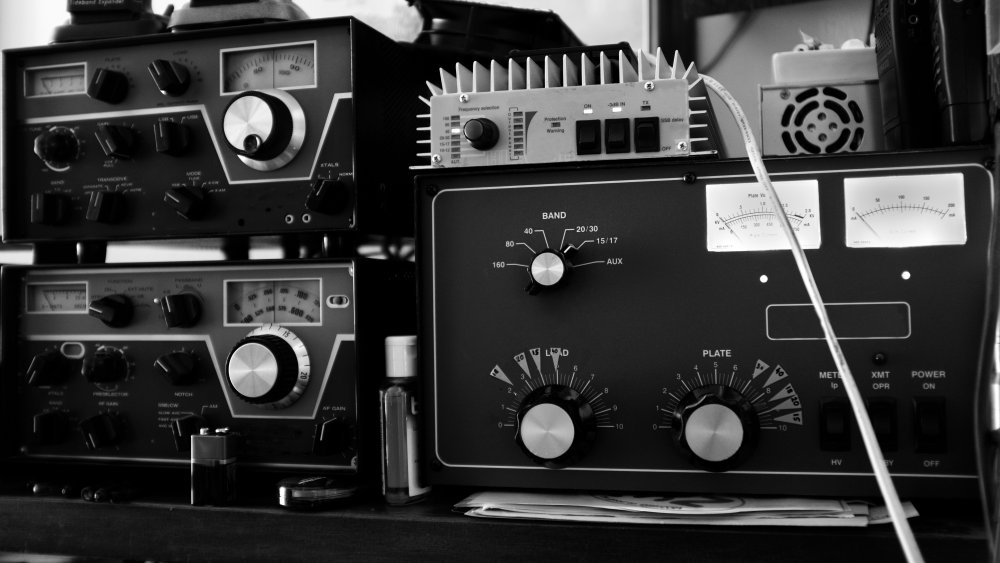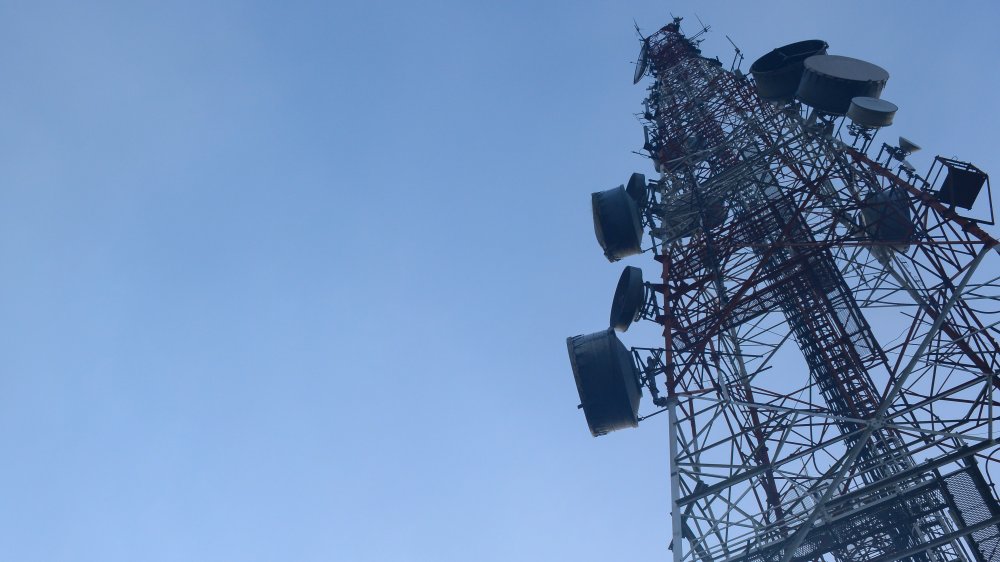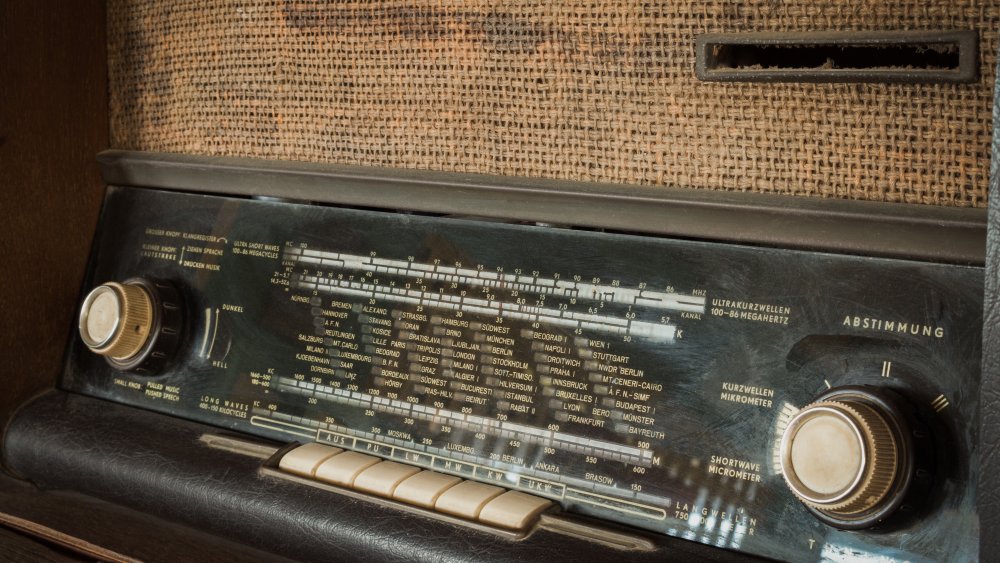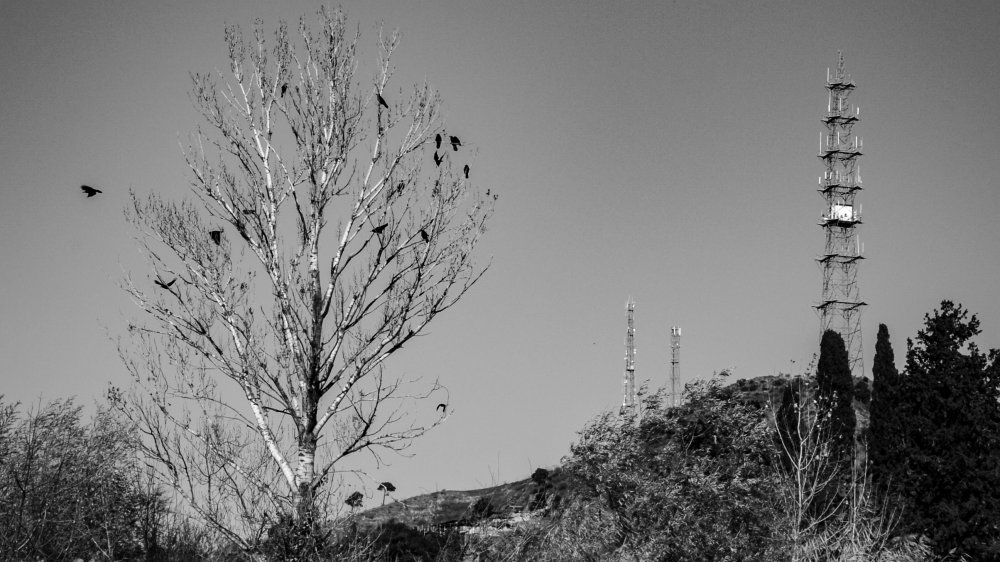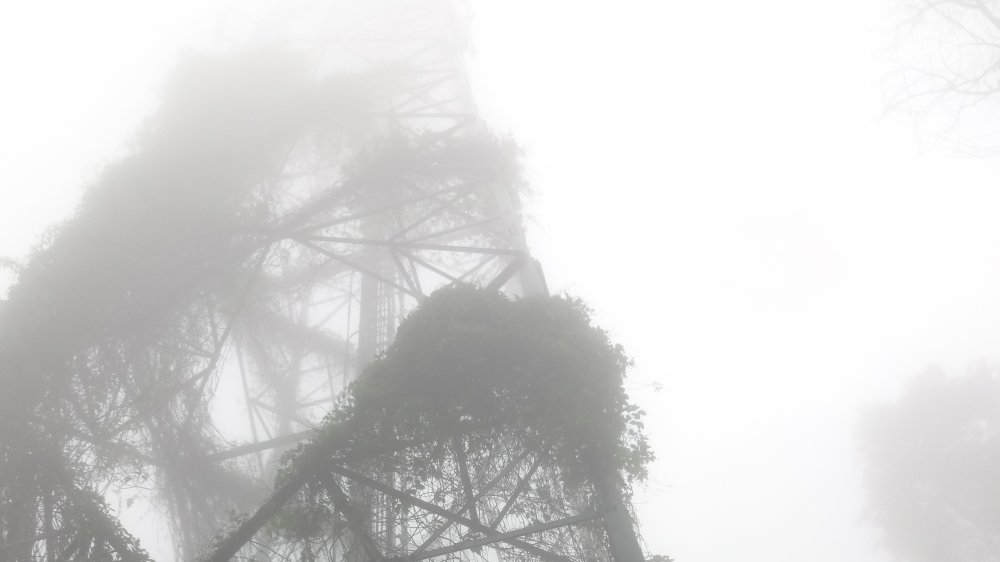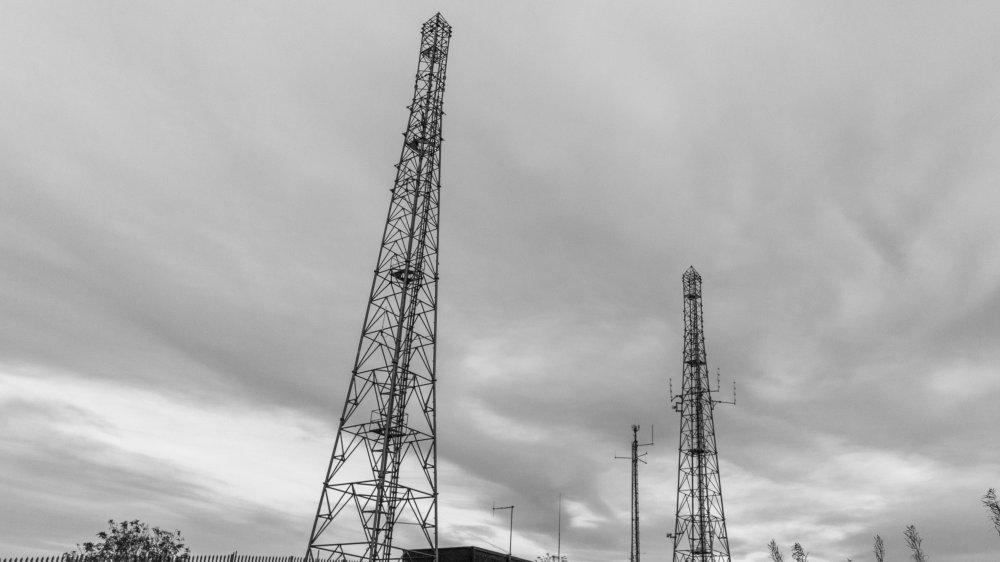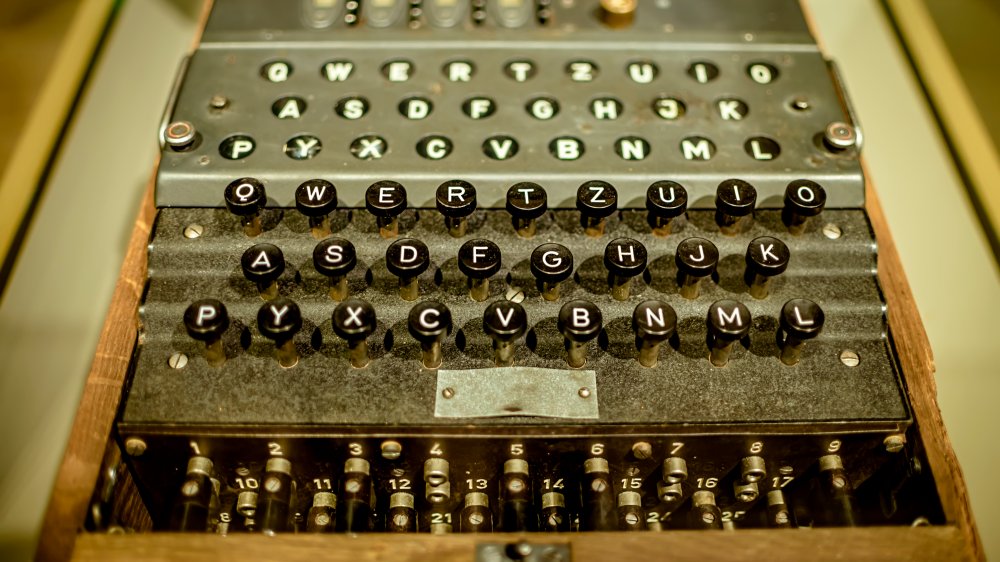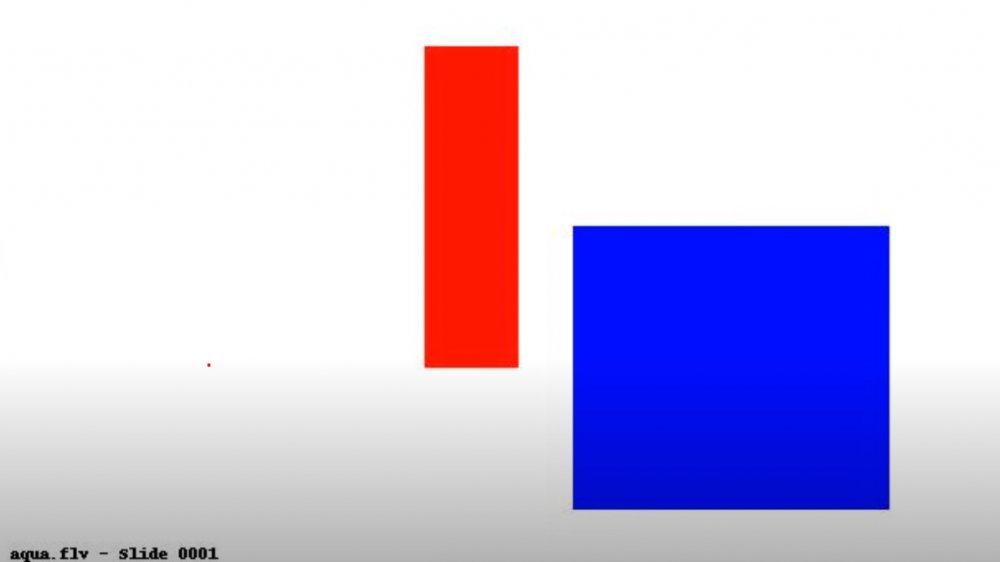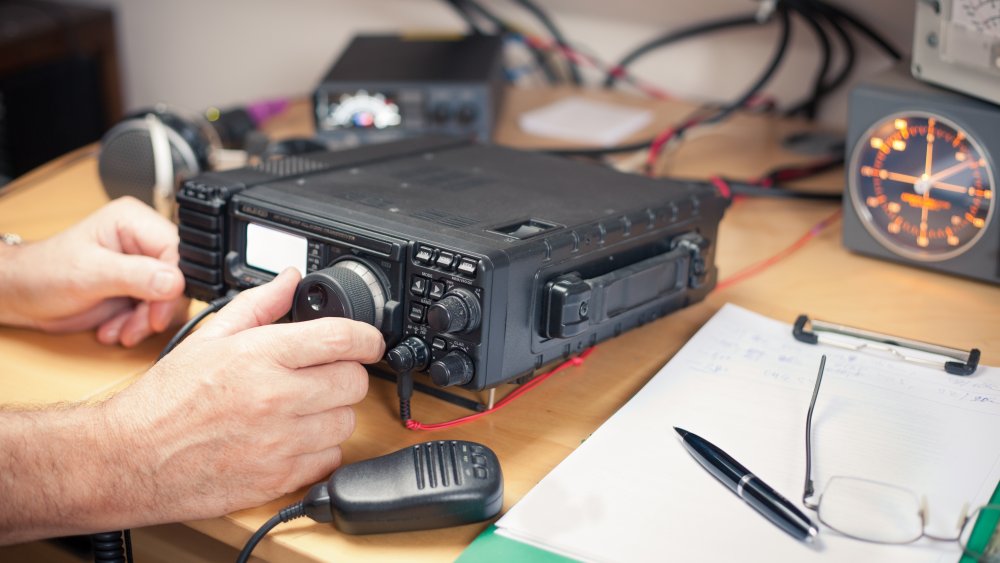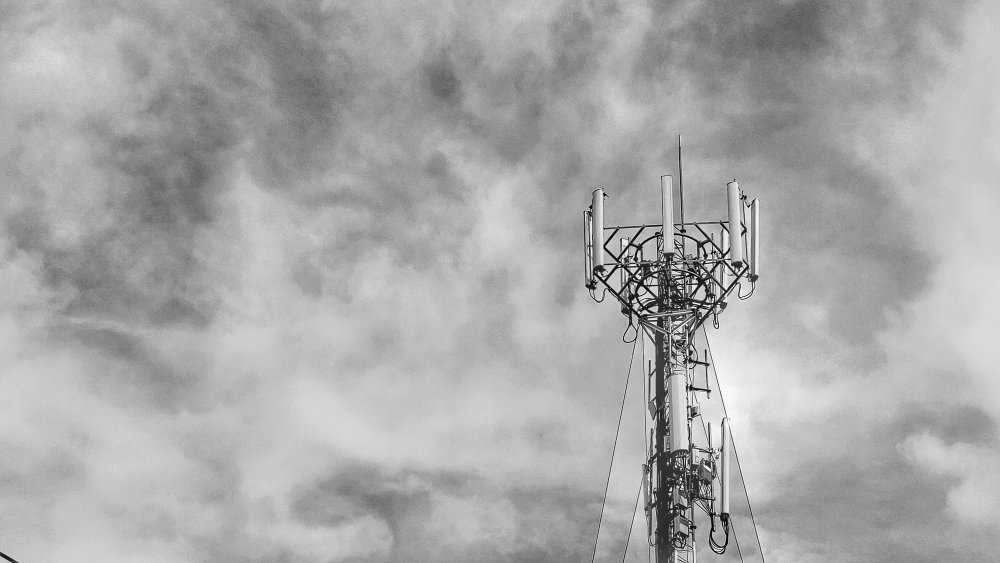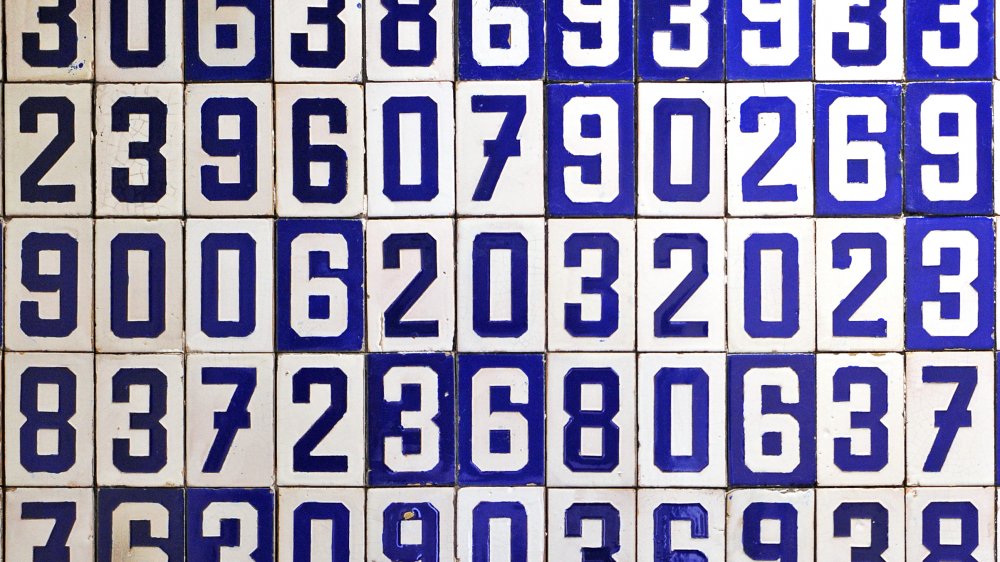The Bizarre Mystery Behind The Numbers Stations
TV and movies have taught us that spies use all kinds of handy gadgets and communication devices to talk with their handlers. How many times have you seen someone undercover in pop culture pretending to feed ducks in a park or use some sleight of hand to sneak a message to someone else?
In real life, this is extraordinarily dangerous because any sort of communique, if intercepted, could blow the spy or agent's cover. They have to find secure ways to hear from HQ and, if needed, send a reply. These can be encrypted voice lines, secured computer terminals, or who knows what else.
But even these methods can be tracked in the real world. Imagine, instead, a radio station that plays coded messages only for spies to hear, and anyone with a shortwave radio can listen in. This is how numbers stations work, but that's not even close to the whole bizarre, mysterious history.
Adding up the numbers
Remember the early 2000s TV show Lost, about the passengers of a commercial flight who crash land on a mysterious island somewhere in the South Pacific? If so, you might also remember that one of the show's many plot threads was a radio station located on the island repeating a constant string of numbers (which later turned out to be their own weird thing, but let's stop there).
That concept was lifted from a real-life phenomenon known as numbers stations. All throughout the world, if you tune a shortwave radio just right, you can occasionally pick up some stations broadcasting various sounds and strings of random numbers (hence the name) or letters read by an eerie robotic voice. These transmissions fall outside of the AM and FM radio bands you might be used to, but anyone with a regular shortwave radio can listen in, no special equipment required, according to How Stuff Works.
Beyond that, there's actually a lot we don't know. There's a lot of speculation about what they're used for and why they exist, but as far as hard facts go, that's about it. They're mysterious radio transmissions with what sounds like random noise and what may or may not be coded messages. While it might not seem all that odd on the surface, they are incredibly creepy to listen to and shrouded in a thick fog of mystery.
Secrets out in the open on the numbers station
So, let's get to it. The most common theory about numbers stations is that they're actually used to send one-way communications to spies and other people committing espionage in countries all over the world, per How Stuff Works. Because they're in a part of the radio spectrum that's rarely listened to, they typically go unnoticed. But even if they do get noticed and listened to by individuals or other governments, it doesn't matter because the messages are coded.
The spy or agent for whom the messages are intended will have what's called a one-time pad. These are sheets of paper that look like they're just filled with random numbers — like a computer barfed all over the page. But in truth, these numbers are actually used to decode the numbers station messages. Each page is used only once because using the same decryption key over and over will all but guarantees the message will be cracked.
It's all really low-tech, but surprisingly effective. Shortwave radio signals can be picked up from very long distances away, they don't require special equipment to listen in, and best of all, since the signal is broadcast openly, it's not possible to tell who is tuned in and listening. You might be able to tell where it's transmitting from, but figuring out who is receiving it, unless you catch them in the act, is impossible.
Radio stations are shockingly effective for spying
Assuming the speculation is true, using shortwave radio signals to conduct espionage makes a ton of sense. As mentioned, the recipients can't be tracked, the code (theoretically) can't be broken, so only the intended target hears and understands the message. Even other spies who might be working for the same country can't figure out the transmission if they don't have the one-time decryption key for that particular broadcast.
When it comes to spying, the very act of attempting to communicate with an undercover agent might blow their cover, How Stuff Works explains. Even if it's something like an end-to-end encrypted message sent over a secure connection, someone who has physical access to the spy's computer or phone would be able to see that they have encrypted communication apps installed, endangering their cover. One-way radio signals are practically invisible by comparison, despite them being completely public.
In spy movies, you'll sometimes see the characters using what's called a dead drop, as described by Wired. This is leaving something, like a suitcase or other object, in a place where another party can come pick it up. Maybe it's hidden or disguised, but it's right there for anyone to potentially grab. Numbers stations are like that, except there's no effort to disguise what the message is, just what it means.
The very eerie sound of numbers stations
While they may be useful and practical ways to communicate with agents working undercover in foreign countries, numbers stations are incredibly creepy sounding. Imagine you're an amateur radio hobbyist, playing around the dial late one night, when you hear a snippet of otherworldly music, followed by a synthesized voice (sometimes even a child's voice, according to the BBC) repeating a series of numbers. Almost as soon as you hear it, it's gone, and the station goes silent once again.
Numbers stations probably originally seemed like a sort of urban legend, as they were so ephemeral that most people would never hear them at all. While some stations operate on strict timetables and thus are easier to find, a great many seem to only broadcast randomly. You can find recordings of these broadcasts all over the internet and they're sort of chilling to hear. You're listening to coded government messages, and it cannot be overstated just how spooky some of them sound.
Several play strings of music as station identifiers, such as the Lincolnshire Poacher or Swedish Rhapsody stations (so named because of the music they play). Due to the low fidelity of the broadcasts, they sound like they're piped in from another dimension. The synthesized voices reading off random bits of code sound like some sort of alien speech. Even knowing what the stations are, they're still a frightening reminder of the world's fears during the Cold War.
Who's on the other end of a numbers station?
While theories about number stations being used for espionage are technically just that — theories — there have been a few occasions where governments around the world have admitted that is indeed their intended purpose. For example, in 1998, after the release of a series of audio CDs called The Conet Project, which contained numerous recordings of numbers stations around the world, an unnamed United Kingdom spokesperson said, per the Washington Post, "These [numbers stations] are what you suppose they are. People shouldn't be mystified by them. They're not, shall we say, for public consumption."
To date, that's the clearest confirmation we've got that numbers stations are indeed used to signal spies. But there are still plenty of numbers stations around the world whose origins and purposes are unclear, such as Russia's famous UVB-76 station, sometimes referred to as The Buzzer.
This station has run for over 30 years, according to Wired. Yet it has also survived the fall of the Soviet Union and continues occasionally broadcasting as of 2020. While it seems likely that the station is run by Russian intelligence, there have been some doubts out there, mostly due to the way the station has been run seemingly with little or no oversight. There's also speculation that some Spanish-language numbers stations aren't government-sponsored at all but actually used by cartels in the illegal drug trade, as reported by How Stuff Works.
Where is that sound coming from?
There's another thing about shortwave radio stations that makes them pretty great for spying and espionage — they're very hard to locate. While it is possible to triangulate the original radio tower broadcasting the signals, it takes a lot of work, according to How Stuff Works. Also, if the station isn't actively broadcasting, there's no signal to trace.
For example, the location of the previously mentioned UVB-76 was eventually tracked to the town of Povarovo, Russia, but that didn't really provide any new information about how the station worked or why it existed, according to Wired. It continued broadcasting even during a complete governmental change, and it's not the only one. Governments have changed power all over the world, especially in Eastern Europe and Central and South America, where many numbers stations can be found, which implies that someone besides the government is running them. Since the discovery of UVB-76's location, the station has actually been relocated to other parts of Russia, meaning the work of triangulating the signal has to start all over.
Either way, not even knowing for certain from where or whom these messages are broadcast gives numbers stations even more mystery behind them, and it's not like they were running on a short supply of mystery to begin with. Even nailing down basic facts about the stations can be incredibly difficult.
Numbers stations are older than the Cold War
Turns out, while numbers stations are most commonly associated with the Cold War, they're quite a bit older than that. How old? Try World War I, when there were reports of regular Morse code being played by shortwave radio stations to communicate with soldiers on the front lines, according to Radio World. These messages weren't exactly encoded (assuming you knew Morse code), but one-way communication from the government to its people over standard radio waves had already begun.
During World War II, things became a bit more serious, with coded messages becoming the norm. Germany had its Enigma code system and the U.S. employed native Navajo speakers to relay messages back and forth, as only a small number of people knew the language (though that did mean you needed a Navajo-speaker to tell you what the message actually said if you didn't know the language yourself).
But it was indeed the Cold War when one-way communication methods really hit their stride. Numbers stations seem to have been just one of several ways to deliver messages to agents overseas, but they were definitely the weirdest. What's more, almost no one knew about them until the 1990s, when the internet dawned and people could swap recordings of broadcasts with one another. This quickly grew into a larger online community compiling and releasing numbers station messages, such as The Conet Project, according to the Washington Post.
Cracking the code of numbers stations
Numbers stations are completely secure forms of communication, assuming they're used correctly. The recipient needs to have a one-time decoding pad to understand the message, and that key is destroyed, never to be used again. In theory. So what happens when someone gets lazy and uses the same encryption key more than once? Much like reusing passwords on websites, it gets far less secure each time.
So, while it's true that numbers stations are highly secure on the whole, there have been at least a few instances of them being decoded (that we know of, anyway). One of the biggest examples of this is actually very recent. In 1995, the United States cracked Cuba's messaging codes and were thus privy to all sorts of intelligence, which they then used to bring several Cuban spies to court, where they used some of the decoded messages as evidence, according to the Miami Herald.
How did they pull it off? Well, it wasn't as hard as you'd expect. U.S. intelligence gained access to a Cuban spy's laptop, and all of the messages sent to agents used a computer program instead of a one-time paper-based system to decrypt. The spy had this installed on their computer and the U.S. was able to make a copy of it without Cuba being aware. After that, they had the keys to the kingdom and could listen in as much as they wanted.
Secret messages on YouTube?
Numbers stations have gained more mainstream attention thanks to YouTube videos and websites dedicated to archiving information about the various stations. They've even made their way into pop culture, making appearances in shows like the aforementioned Lost example, but they've also appeared on Fringe, as well. Okay, so maybe J.J. Abrams just really likes them.
Due to this popularity, however, there have been quite a few fakes out there. Some are alternate reality games (ARG), which aren't really fake per se, more trying to tell a fictional story in interesting ways using modern technology, like Twitter account horse_ebooks and YouTube channel Pronunciation Book, which inserted coded messages into their content as part of a game/art project called Bear Stearns Bravo, according to Entertainment Weekly. A few purported numbers stations recordings shared on YouTube have turned out to be simple hoaxes, people trying to start rumors or gain attention for themselves.
Then there are things that are none of the above. For example, in 2014, YouTubers discovered what seemed like it could be a modern example of a numbers station. The channel, creepily named "Webdriver Torso," posted thousands of videos in a short period of time with visuals and audio that seemed to be coded messages, according to the Washington Post. Turns out, it wasn't anything quite so creepy — the account was actually a testing tool used by Google in Zurich.
The people who listen to numbers stations
You can find a fandom for anything on the internet. That random background character in one episode of Game of Thrones? That dude has multiple blogs dedicated to him with over 400,000 followers on Tumblr. But even pre-internet, numbers stations had die-hard followers who would listen 24/7 for the latest broadcasts, even without having any idea what they meant. The internet merely supercharged the community in their search for answers.
Take, for example, Andrus Aaslaid, a Tallinn, Estonia resident who discovered Russian numbers station UVB-76 while playing around on the shortwave dial in his home country. He decided to set up an audio relay which he then put online, effectively live streaming the station to the rest of the world, according to Wired. Now, even people with no amateur radio experience can easily listen to the broadcasts of numbers stations across the world.
And listen they do. Several stations have their own individual community of people who listen in and document everything that goes on down to the second. Even minute things, like a slight difference in the station's sound or more static than usual, will likely catch someone's ear and spawn all new discussions on what's going on. Even with the actual messages and intent of the stations unknown, random strangers from all over the world are listening in at any given time.
Change isn't always good
As mentioned, many numbers stations operate on strict timetables. Sometimes they make seemingly random broadcasts. It can be impossible to know what the cause or reasoning behind a message might be, as everything about them is shrouded in mystery. So what if we take the opposite approach by looking at certain big events and see how numbers stations' broadcasts change?
Many times, this can be fruitless. Even with government changes, wars beginning or ending, and all the various events that happen throughout the years, many stations keep broadcasting all the same, which is why at least a few numbers stations are suspected to be "dead hand" systems, meaning that as long as they continue broadcasting, everything is a-okay. But if they ever stop, that means something has gone terribly wrong, according to Global News.
But occasionally, a major world event has marked a noted change in a numbers station's broadcast. In 1993, an attempted military coup in the former Soviet Union, then under President Boris Yeltsin, seemed to cause various numbers stations located in the country to change their broadcasts to repeat the number "five" over and over until the crisis was settled, according to Slate. No one knows what that means, exactly, but it's definitely very spooky, sort of like a real-life version of Emperor Palpatine sending out his Order 66 message to all of the clones in Star Wars: Episode III – Revenge of the Sith.
Numbers stations are still around today
Since it's now the future and we do have all of this sophisticated and secure communications technology, as you can imagine, numbers stations are slowly broadcasting less and less or shuttering completely. Secure messaging systems and advanced web security give intelligence organizations new ways to pass secret messages to their agents. Numbers stations are old news by that standard.
Yet many numbers stations still broadcast. Why? Who are they still communicating with? Simply put, no one knows for sure. Perhaps it's the simplest reason: Numbers stations, as low tech as they are, are still incredibly secure if used alongside one-time decryption keys and any potential listeners cannot be known, according to How Stuff Works. Computer-based encryption could similarly operate on a one-time code basis, but the problem is that internet traffic can be tracked. If someone receives a message, it will be transmitted to the spy's computer as data packets and any reply will be sent the same way.
Because of the way the web was built, basically, all traffic can be traced back to a source. That source can be obfuscated or only encrypted traffic could be used, but that would look suspicious to anyone watching closely, such as counter-intelligence agents. As long as espionage is still a thing, numbers stations will likely continue to be used, in spite of how old-fashioned they might seem.
